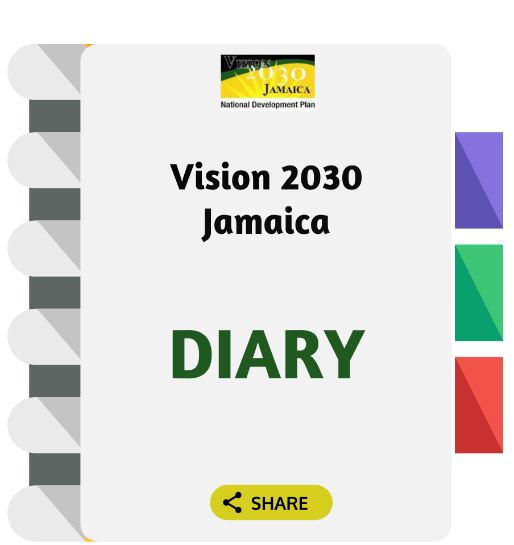Blog
Visions 2030 Jamaica: A Challenging implementation environment, but still valid.

Visions 2030 Jamaica: A Challenging implementation environment, but still valid.
The prospects of Jamaica attaining the 4 goals and 15 national outcomes outlined in Vision 2030 Jamaica, within the original timeframe is difficult. However, the development deficit that the country faces, demands that a greater national effort should be put in place, rather than any contemplation of abandonment of the mission.
National Development is a long-term complex process, which requires, inter alia, dedicated and passionate leadership at various levels guided by a powerful vision to move the society forward. Vision 2030 Jamaica was an attempt to capture and synthesize the dreams and aspirations of the key stakeholders in the Jamaican society in such an endeavour. That is what the 4 National Goals and 15 National Outcomes represent. However, goals have to be backed up by solid national implementation, and this is where there has been a clear and historic deficit across all sectors for much of the post-independence period. This deficit indicates that there is likely to be a misalignment between goals and capabilities—skills, resources, incentives, and costed implementation sector plans. A workable implementation strategy requires that goals and capabilities are aligned.
It is well documented by the Planning Institute of Jamaica (PIOJ) that the country is behind in some of the key areas for the attainment of the deep desire for “security and prosperity”. Much of this can be traced to the historic deficits we have had since pre-independence, the many shocks, and volatility that the country has had, both internal and external, over the years, as well as the deficiencies in human and social capital. The emergence of new shocks (climate change, pandemics, geopolitical uncertainties) will push back the attainment of the medium- and long- term goals set out in Vision 2030 Jamaica.
The Jamaican leadership and people must rise to meet the goals and targets in Vision 2030 Jamaica. They are still valid and worth fighting for. Success will, however, require a rededication and recalibration of the long-term plan. It is necessary to rethink and to learn from the process to date, and to take on board the new challenges, experiences and context.
To meet the targets currently set out in Vision 2030 Jamaica, and which are largely aligned with the United Nations Sustainable Development Goals (SDGs), will likely also require changes to the original strategy.
This recalibration will have to be realistic and include a pushing out of the timeframe for the attainment of the original goals and outcomes. If the planners want a “radical change” to the original model, it may best be done with broad consensus from key stakeholders, the way Vision 2030 Jamaica was originally done. Given the fractious, low trust nature of the Jamaican society, this is very necessary if the plan is to maintain its national embrace.
Whatever form the new approach takes, the key components must continue to include:
- Infrastructure investment—energy, roads, and transportation. These are the keys to driving private investment (local and foreign)
- Investment in health, education and human capital
- Macroeconomic stability
- Open international trade (inclusive of the strategy to incorporate the Economic Free Zone (EFZ))
- Private sector development
- Good governance—efficacy and competence of the state and public bodies, anti-corruption, fairness and accountability
- Social inclusiveness—greater equity, opportunities for all groups to participate and achieve upward social and economic mobility
- Political stability, security, and stable and good relationships internationally
- Clear, well-articulated, and communicated vision of a better future.
The good thing for Jamaica is that there is a wide degree of consensus that has emerged around many of these issues that should make planning and execution a bit less challenging.
We have to face head-on the challenges, errors and shortcomings we encountered as a country since Vision 2030 Jamaica started. It would probably be better to frame these more as part of the overall development challenges that the country has faced since the launch of Vision 2030 Jamaica, and subsequent to the global financial crisis of 2008. These created huge shocks to the Jamaican economy, leading to debt restructuring and a deeper relationship with the IMF. The IMF Programme was given priority for many years, and then we had to face COVID-19, as well as the ongoing climate change emergency. These are real issues that have set back development of our Plan. Given our historic development deficit along with all these shocks and volatilities, it is not difficult to see why progress has been slow.
These issues represent the context for recalibrating Vision 2030 Jamaica, and for re-energizing the development agenda. Despite how difficult the context, and the challenges, the country has no choice but to push ahead to make “Jamaica, the place of choice to live, work, raise families, and do business”!
Wesley Hughes, CD, PhD.
August 30, 2022
Up Next: Strengthening Access to Capital through Equity Financing (August, 2022)



